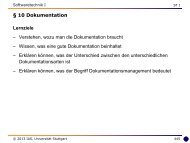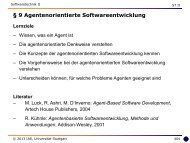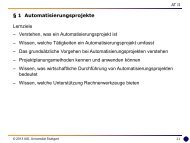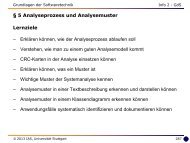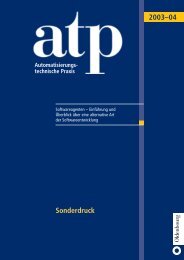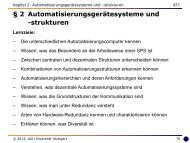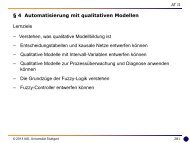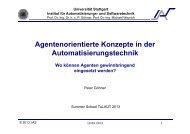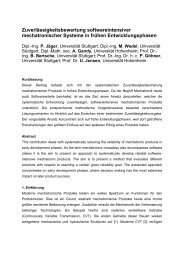Grundlagen FlexRay - Institut für Automatisierungs- und ...
Grundlagen FlexRay - Institut für Automatisierungs- und ...
Grundlagen FlexRay - Institut für Automatisierungs- und ...
Create successful ePaper yourself
Turn your PDF publications into a flip-book with our unique Google optimized e-Paper software.
<strong>Gr<strong>und</strong>lagen</strong> <strong>FlexRay</strong> BasicsV 1.1 31<br />
( ) (4)<br />
Table 2.3 Timing Parameter [VeSc11], example<br />
From the selected bus data rate of 10 Mbit/s results the bit duration gdBit = 0.1µs (1), by<br />
multiplying the number of samples per bit cSamplePerBit = 8 with the sample duration<br />
gdSamplesClockPeriod.<br />
As for choosing the duration of a Microtick pdMicroTick, there are three different<br />
configurations to choose from, depending on the ECU. For example, with an oscillator<br />
frequency of 80MHz the number of samples per Microtick equals pSamplesPerMicroTick = 1<br />
an using (2) , the duration of a Microtick equals pdMicroTick = 0.0125µs.<br />
By selecting the length of a Macrotick gdMacroTick it is possible to create a standardized<br />
proportion pMicroPerMacroNom between Microtick <strong>und</strong> Macrotick (3). Using the cycle<br />
length gdCycle we are able to calculate the number of Macroticks per Cycle gMacroPerCycle<br />
(4).<br />
Even more details can be fo<strong>und</strong> in the <strong>FlexRay</strong> Specification [FRPS05].<br />
Bäurle 12.10.2012




